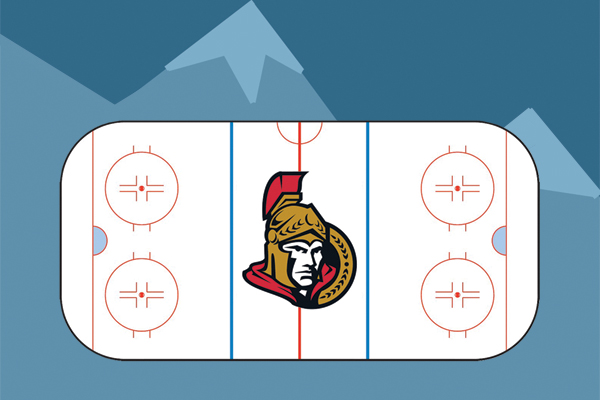Hop to it
Consider northern Alberta, Canada’s largest commercially exploited oil sand deposit. The extraction of bitumen (crude oil) generates large amounts of waste that is stored in these holding ponds known as oil sands process affected water (OSPW). These ponds contain different types of chemicals, including a complex family of Naphthenic acids, composed of thousands of chemicals, some of which are toxic.
The problem, according to Vance Trudeau, a professor from the University of Ottawa is these holding ponds can potentially release some of the petroleum-derived chemicals into the environment. The increase in pollution in general and specifically as related to petroleum extraction launched senior author Trudeau and his previous PhD student Juan Manuel Gutierrez to study the potential effects of naphthenic acid mixture from oil sands on amphibians’ embryonic development.
What is the importance of using frogs for this study?
According to Trudeau, amphibian populations around the world have been in decline since 1980. About one third of amphibian species are in decline, a scale not seen since the dinosaur extinction 66 million years ago. This decline in species today is referred to as the sixth mass extinction event in earth’s history. Many believe this is largely caused by human activity, evidenced in part by habitat loss due to construction or deforestation. Another is disease and a third major contributor is pollution.
Additionally, frog tadpoles are great models for human development. Evolutionarily speaking, they’re tetrapods (vertebrates that have four limbs), and more closely related to humans than fish. Thus, it’s more advantageous to study and understand how these chemicals might disrupt tadpole development. The tadpole is thus a surrogate for the fetus in mammals like humans.
A primer on oil extraction
These oil sands are the largest engineering project in all of human history. With Canada as one of 70 countries that exploit oil sands commercially. Some claim it as a major economic driver while others see it as an environmental disaster. Naming aside, its controversy is undeniable.
Our own Prime Minister Justin Trudeau once said, “no country would find 170 billion barrels of oil in the ground and just leave them there.”
But, how do we extract those 170 billion barrels of oil?
Let’s start with the oil sands themselves, which don’t actually contain any oil in the conventional sense. What they do contain is bitumen, a thick and viscous form of petroleum. To extract the bitumen, you need to separate the sand and clay from the bitumen located in the oil sands.
“Now, you can experience this yourself, as you go to the beach, and you spill your tanning lotion and get sand in it, it’s impossible to separate the two but they do it with chemicals and heat,” added researcher Vance Trudeau.
Once separated, the bitumen needs to be extracted in one of several processes known as open pit mining. To understand the scale of these processes, open pit mines located in Alberta can be seen from space.
What’s left over is a mixture of water and other pollutants (tailings waste). They place this mixture in holding ponds, which are massive artificial lakes where these toxic chemicals are found. They are left to degrade over many years, but some are leaking out despite huge efforts to control this. As a result, these chemicals are being added slowly to our environment because of our extraction of petroleum products.
Trudeau continued, “no matter what the province of Alberta says if you put millions of litres in a bag in the middle of the forest, it will leak and the indigenous people will tell you that they’re sick and it’s probably related to petroleum exploration.”
Naphthenic acids are not only found in the oil sands but are also used “as preservatives for certain products, Naphthenic acids are not only found in the oil sands but are extracted from conventional oil and used as building blocks for other products such “as preservatives for certain products, paints and things like that. So they have very valuable industrial use, but also they’re quite toxic. And if you look at some of the pictures in our publication, even at very low levels that you’d find in the environment you can get abnormal development,” said Trudeau.
Research methods and results
In essence, the U of O researchers took different doses of the chemical mixtures from different sources. One of them was a commercial mixture a chemical industry would buy to fabricate different products. Another extract was from the oil sands in Alberta, which was provided to the researchers by colleagues from Environment Canada.
“So we had several controls. We had just a normal animal in the normal water growing and getting fed normally. And then we had animals that would be in the carrier liquid. So you dissolve these chemicals in and then you have the mixtures at different doses. So a bunch of different controls. So you know, that at a certain dose, it’s gonna cause that effect,” explained Trudeau.
In terms of next steps, “then we tested the responses and found out which dose would kill the animals. After another round of experiments we went below that previous dose, and sometimes very much lower than you see what we call sub lethal effects. So that will be the abnormalities that don’t necessarily lead to death. So water accumulation, heart problems, stunted growth, gut problems, etc.”
What the researchers concluded was that the sublethal (very low environmental levels) can cause heart problems, stunted growth, and problems in development. What researchers also established was that the industrial form was more toxic than the form found in the oil sands.
An important distinction to make is, “more toxic doesn’t mean the other one’s not toxic. So at environmental levels, the chemicals in the Alberta oil sands would cause similar problems. These are not safe chemicals by any imagination. They’re just less toxic than the other ones.”
Most surprisingly, the low sublethal levels of this mixture are well within what’s being measured in the environment and can have an effect that doesn’t mean it will persist in the environment. Meaning, if these abnormalities were induced in the wild there would be no way of knowing. Within a day or two they would have died and subsequently disappeared. Therefore, it would be nearly impossible to measure and identify the impacts of these toxins on embryonic frog development in the wild.
In a second paper, Trudeau looked at the genes potentially linked to the abnormalities described in the first study.
In brief, he started by examining the mechanism that might explain the deformities and compared the commercial and oil sand samples. What they found was that both turn on genes in the same way. There were two genes in particular that could be used as markers related to gut abnormalities and edema which is when liquid enters between cells and tissues and causes swelling.
Currently, Trudeau and his team continue to research vertebrates and how their brains regulate hormones that control sexual development and reproduction and how these fundamental processes may be affected by a range of environmental contaminants.






